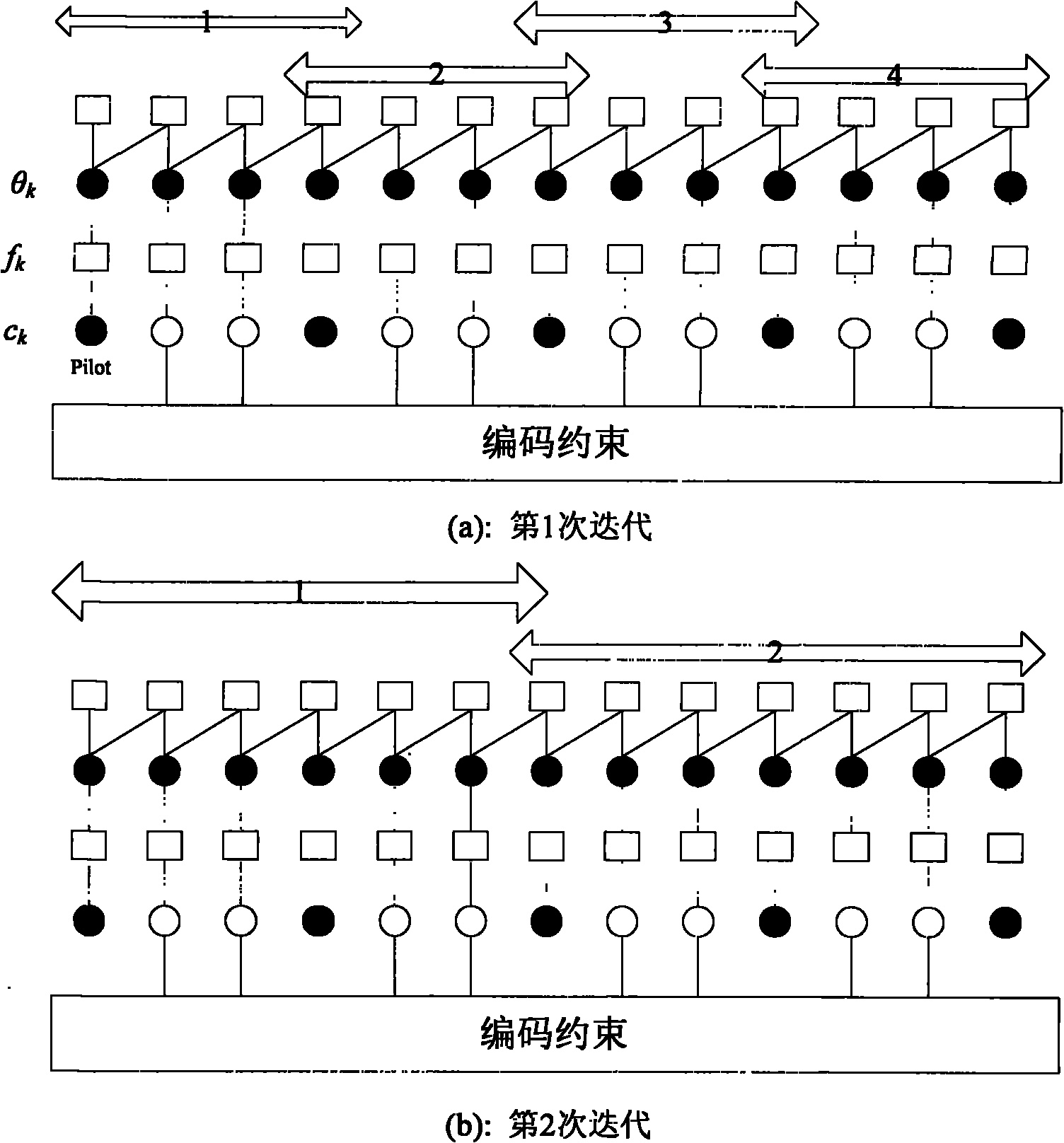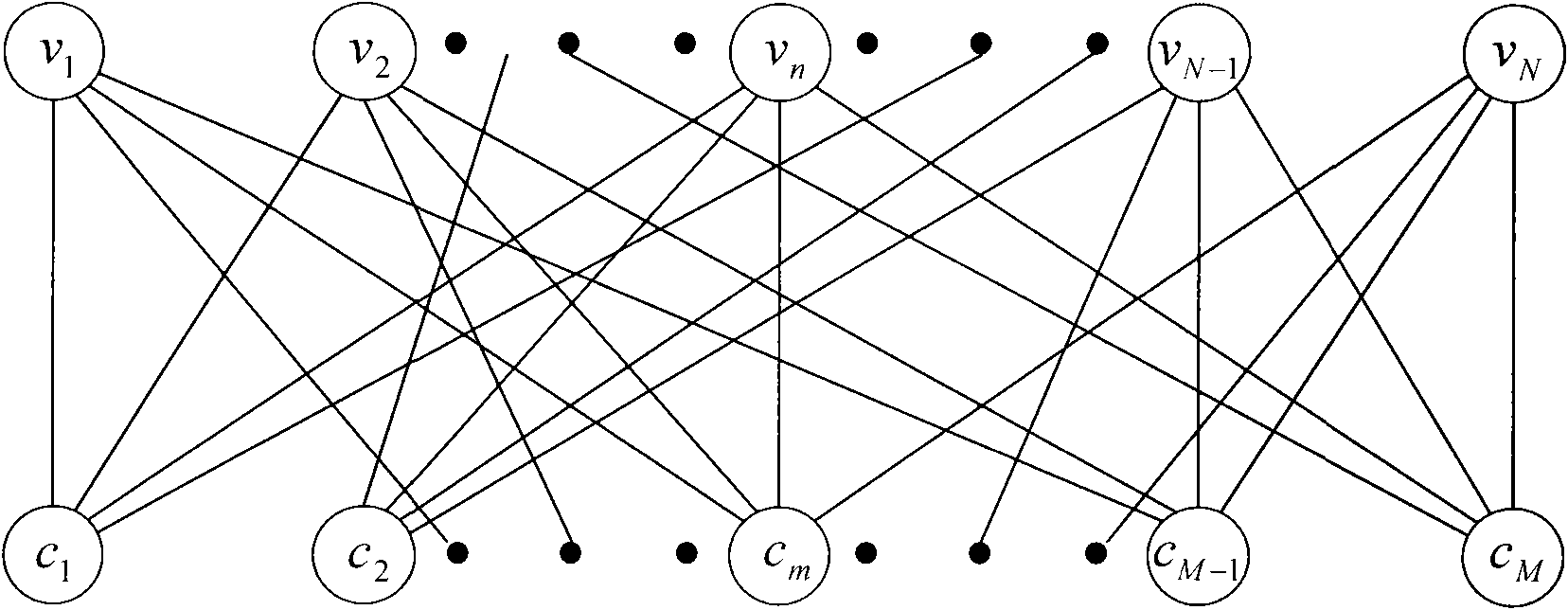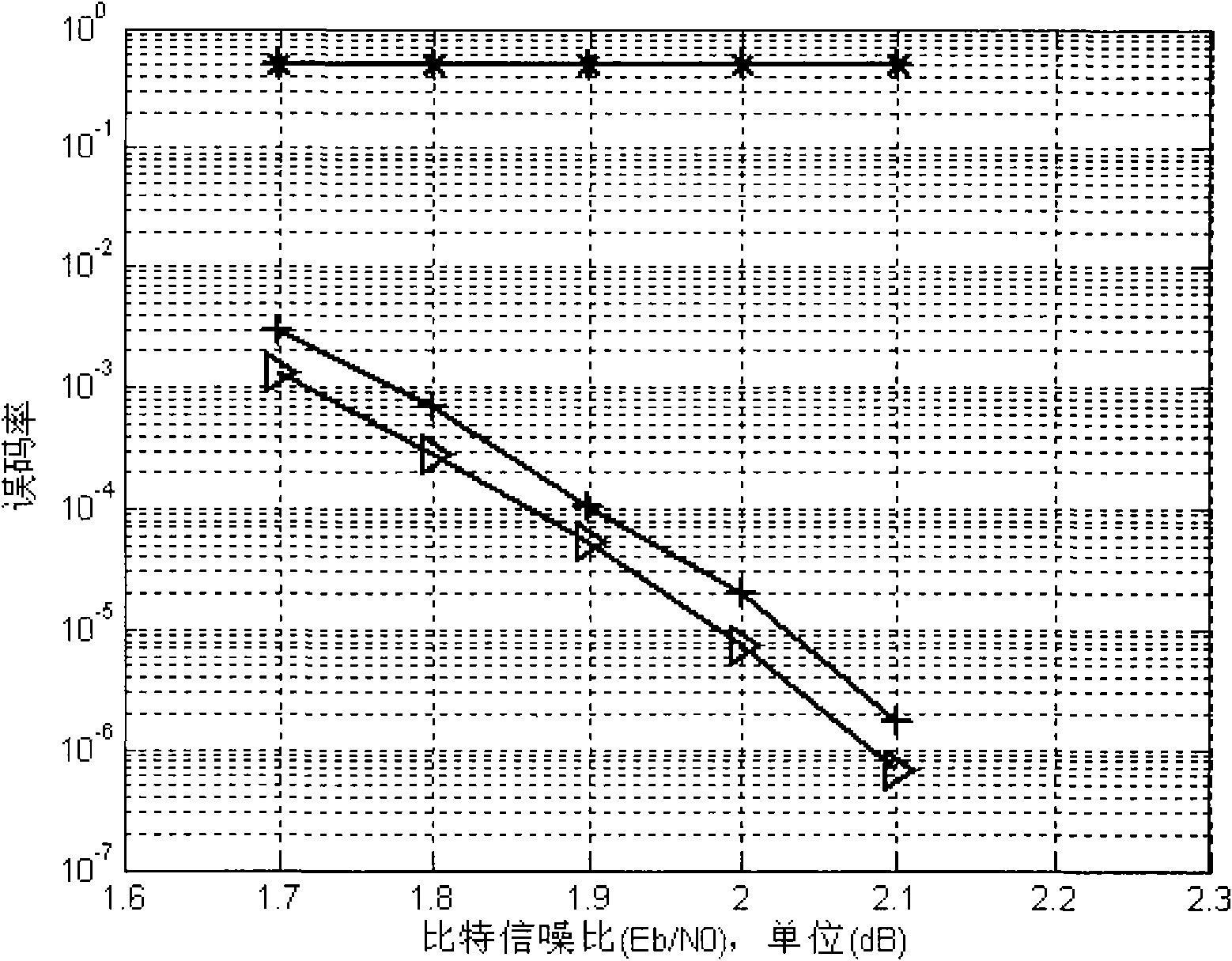Iteration demodulation decoding method of encoded modulation signals based on climax frequency deviation compensation
A technology of frequency offset compensation and coding modulation, applied in the field of wireless and satellite communication
- Summary
- Abstract
- Description
- Claims
- Application Information
AI Technical Summary
Problems solved by technology
Method used
Image
Examples
Embodiment Construction
[0120] In this example, the regular (3,6)-LDPC code with a code rate of 1 / 2 is selected, and the code length is L=4096. The number of initial data sub-blocks of the encoded codeword is B=128, the size of the initial data sub-block is D=32 and the preambles are distributed in each initial sub-block, and the number of preambles in each sub-block is P=1. B l =min(2 7-l , 128), D l =min(2 l D, 4096), where min(x, y) represents the smallest number among the numbers x and y. N l =D l +min(2 l +1, 128+1). In the modified M&M frequency offset estimation algorithm, the segment accumulation length is F=32, and the parameter E=32.
[0121] The iterative demodulation and decoding method proposed by the present invention is as follows: receive a complete frame of a coded modulation signal, and cut it into multiple signal sub-blocks; initialize the external information of the coded bits; For signal sample values, a modified M&M algorithm is used for frequency offset estimation; car...
PUM
 Login to View More
Login to View More Abstract
Description
Claims
Application Information
 Login to View More
Login to View More - R&D
- Intellectual Property
- Life Sciences
- Materials
- Tech Scout
- Unparalleled Data Quality
- Higher Quality Content
- 60% Fewer Hallucinations
Browse by: Latest US Patents, China's latest patents, Technical Efficacy Thesaurus, Application Domain, Technology Topic, Popular Technical Reports.
© 2025 PatSnap. All rights reserved.Legal|Privacy policy|Modern Slavery Act Transparency Statement|Sitemap|About US| Contact US: help@patsnap.com



